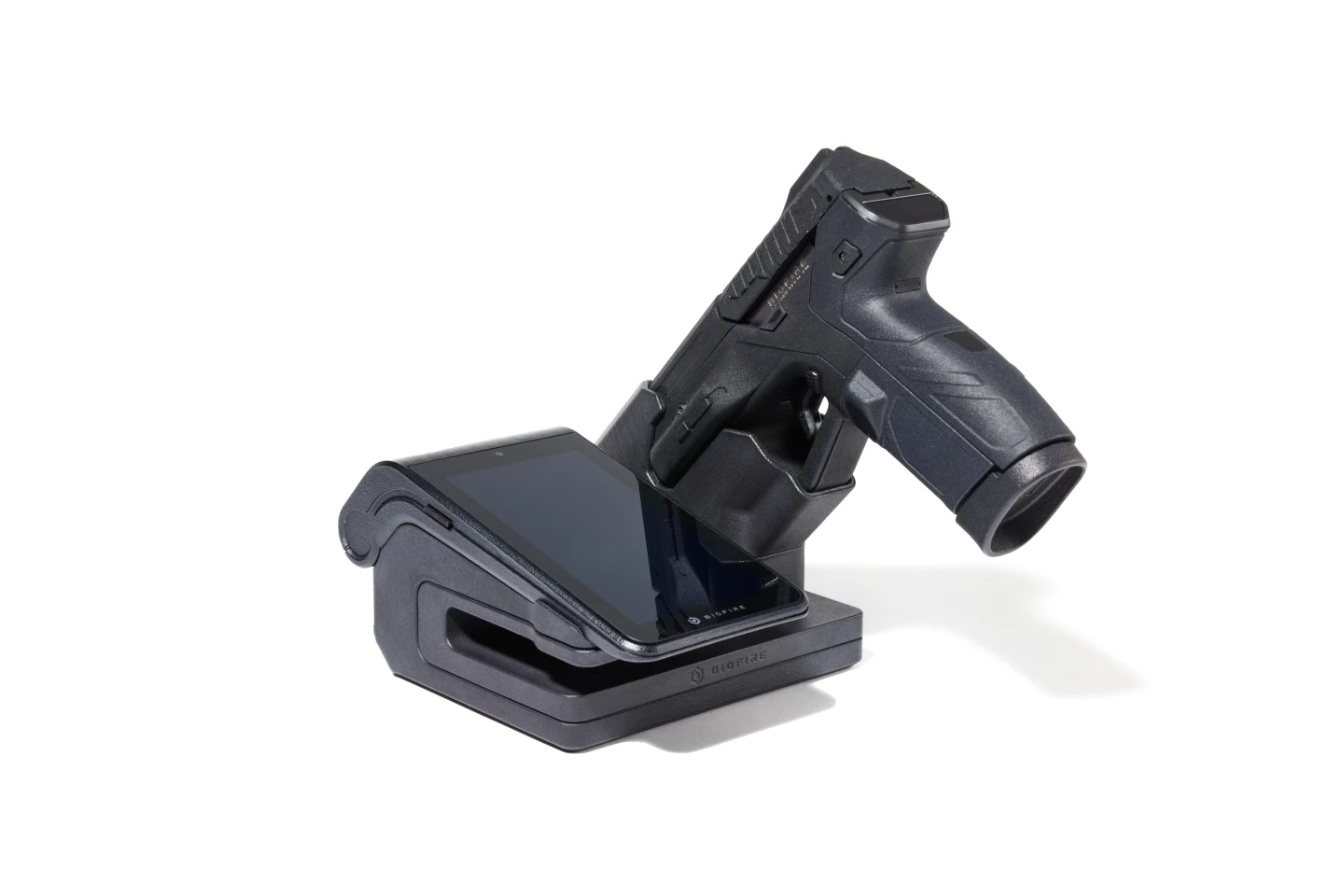A 'safe' handgun is a relative term, but Colorado-based Biofire Technologies is taking a high-tech crack at the idea with its Biofire Smart Gun, which uses an electronic identification and firing system to prevent accidental or unauthorized use.
The concept of a smart gun that can only be fired by an authorized user and no one else has been around for decades. The idea resurfaces from time to time and, despite having one US state mandating their sale, as yet no smart guns have been offered for commercial sale in the United States.
There are a number of reasons for this, but one of the biggest obstacles has been producing a practical handgun that can identify its user with a high degree of reliability in an emergency and ensure that the weapon will fire on demand. This is because handguns, though they seem complicated to many people, are very simple, compact, and robust mechanical devices and adding an electronic safety device can make the gun clumsy and introduce points of failure when it is needed most.

Traditionally, attempts at making a smart gun have revolved around taking a conventional firearm mechanism and introducing some sort of electromechanical lock that blocks it until some sort of key unlocks it. This key can be an RFID tag, a smart watch, a magnetic ring, a bracelet, a physical key, or a biometric lock. The problem is that keys can be lost or stolen and biometrics can fail due to something as simple as a dirty finger.
Biofire Technologies hopes to overcome these limitations by avoiding the problem of modifying a conventional mechanism. Instead, the company opted for redesigning its Smart Gun to work on a completely different principle.
Instead of mechanical linkages and springs actuated by pulling the trigger causing the firing pin to strike the cartridge primer and setting it off, the 9mm Smart Gun uses a solenoid to drive the pin. This is set in motion by the trigger, which is not directly connected to the pin, acting as a switch. Between the trigger and the pin is the digital circuitry and software that authenticates the user in a fraction of a second.

This authentication is by means of two biometric methods. One is a fingerprint sensor on the grip that identifies the user's middle finger. Ideally, a pistol grip is designed so that when the user grasps it, the hand rests in exactly the right position. Since one reason fingerprint sensors fail is that the user touches them at the wrong angle, the grip position minimizes this.
Another problem with fingerprint sensors is that they can be foiled by a dirty or cut finger. To overcome this, the Smart Gun also has a 3D facial recognition system set in the back of the gun. With this redundancy, the idea is that if the fingerprint system fails, the face recognition won't, and vice versa.
In addition, there is an infrared sensor on the rear of the grip that tells the system that the gun is still being held by the user. This avoids the need for the system to waste time and energy reaffirming the user's identity over and over. The grip comes in a variety of options, including left-handed, and can be customized to suit the user.

The Smart Gun is based on Biofire's Guardian Biometric Engine, which is set using a secure, portable Smart Dock. The gun does not depend on Wi-Fi, Bluetooth, or GPS, so the programmed biometric data cannot be accessed remotely and the gun cannot be converted to act like a conventional handgun.
"Biofire's approach is totally novel: we've applied high-precision engineering principles to make a meaningful impact on preventable firearm deaths among children," said Kai Kloepfer, CEO and Founder of Biofire. "No one had tried that before. As a result, Biofire is now offering the most technologically advanced consumer firearm the industry's ever seen. The Biofire Smart Gun shoots like any high-quality firearm, but it also feels like you're holding the future in your hand. This is a new era in firearm safety driven by ambition and optimism, motivated by the idea that we can in fact help save people's lives."
The Biofire Smart Gun is available for pre-order for a refundable US$149 deposit and a total price of US$1,499, and ships under the same regulations as a conventional firearm.
Source: Biofire Technologies











